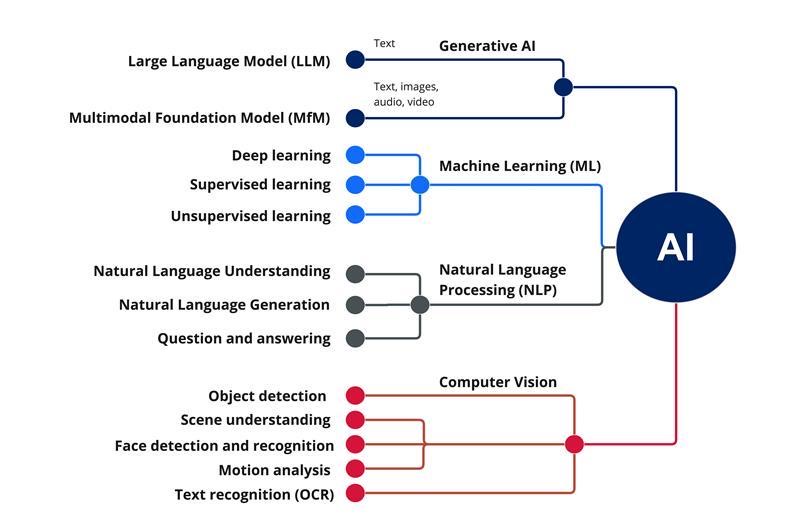The Accurate and Useful AI Trends in 2025
I don’t know about you, but as AI floods social media, my feed is bombarded with content about Artificial General Intelligence (AGI), Artificial Superintelligence (ASI), and other speculative topics that might be showing up on your feeds too. While these futuristic ideas capture imagination, most remain immature, far from widespread adoption, and often distract from the real AI transformations happening today. So today, I want to demystify the accurate, useful, and current AI trends you should know.
Before exploring today’s AI trends, it’s helpful to understand the main AI modalities powering these technologies. Natural Language Processing (NLP) dominates in conversational AI and text-based applications, with LLMs (subset of NLP) driving much of the current AI excitement. Computer Vision (CV) is foundational for image, video, and multimodal AI for generative image models and all visual tasks. Machine Learning (ML) underpins all these modalities, providing the algorithms and architectures for data learning.

Understanding the AI Assistants We Use Every Day
1. Large Language Models (LLMs): Your AI Assistants (NLP + ML)
Most people recognize AI through Large Language Models (LLMs) like ChatGPT — AI assistants that help with writing, coding, research, and answering questions. These models are part of Natural Language Processing (NLP), the AI field focused on understanding and generating human language. Built using advanced machine learning (ML), especially deep learning, LLMs learn language patterns from vast amounts of text. NLP powers many everyday tools such as translation, sentiment analysis, spam detection, email filtering, voice assistants, and the emerging trend of vibe coding. Examples: ChatGPT (OpenAI), Claude (Anthropic), Gemini (Google DeepMind).
2. Generative AI: Creating New Content (ML + CV + NLP)
Generative AI models create new content like text, images, music, or videos by leveraging machine learning techniques. This field spans multiple AI modalities: Natural Language Processing (NLP) for text generation, Computer Vision (CV) for image and video creation, and audio processing for music and speech synthesis. Examples: Midjourney, DALL-E (OpenAI), Stable Diffusion.
3. Multimodal AI: Combining Modalities for Richer Understanding
Multimodal AI is an advanced evolution of generative AI that integrates multiple data types — text, images, audio, video, motion, and specialized data — into unified models. Using cross-modal learning techniques, these AI systems process and reason across different modalities simultaneously, resulting in more context-aware and natural outputs. For example, multimodal AI can analyze an image you upload and generate a detailed description or create images from your text prompts. Examples: GPT-4 Vision (OpenAI), Gemini Ultra (Google DeepMind).
4. Explainable AI: Making AI Transparent and Trustworthy
Explainable AI (XAI) focuses on making AI decisions clear and understandable, which is crucial in sensitive areas like healthcare, finance, and law. Using techniques such as attention maps and causal reasoning, XAI helps users see why AI made certain decisions, building trust and supporting regulatory compliance. This field has matured since the early 2010 and is now mainstream in enterprise applications. Examples: IBM Watson OpenScale, Fiddler AI, Google Explainable AI.
Final Thoughts: Practical AI Driving Real Value in 2025
In 2025, AI is not about sci-fi ideas of sentient machines or robots. It is a practical, measurable tool delivering real business value. Enterprises are scaling AI strategically with clear ROI. The convergence of natural language processing (NLP), computer vision (CV), and machine learning (ML) modalities is creating powerful, versatile AI tools shaping our world today and offering a glimpse of what’s coming next.
